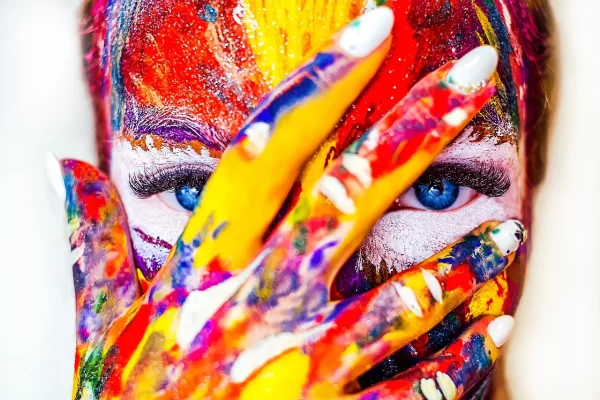Do you want to learn how to write creative writing examples? Creative writing can be a lot of fun, but it can also be challenging.
In this blog post, we will provide you with a comprehensive guide on how to write creative writing examples that are both interesting and engaging.
In addition, we will discuss the different types of creative writing and some helpful tips on how to create your pieces. So, if you are ready to learn about how to be a creative writer, keep reading!
What is creative writing?
Creative writing is a type of writing that is not constrained by traditional grammar or syntax rules. Instead, you can use it to express your thoughts and ideas uniquely and interestingly. Creative writing can encompass a variety of genres, including poetry, short stories, novel excerpts, and even screenplays.
Why do we need to learn how to write it effectively?
Creative writing can be a great source of expression and can help us communicate our thoughts and ideas more excitingly. It can also be a fun form of self-expression, and it can be a great way to explore new ideas and perspectives. Creative writing can also be used for therapeutic purposes, helping us to work through difficult emotions or experiences.
The basics of creative writing
So, now that you are aware of some of the benefits of creative writing let’s look at the basics. Creative writing is any form of writing that is not journalistic or academic. This means that it can be fiction or non-fiction, poetry or prose, and you can write it for various purposes, including entertainment, self-expression, or a therapeutic outlet. Own story
What makes a good story
Creative writing is often defined as “anything goes” writing, meaning no rules or conventions to follow. However, there are still some essential elements that all examples of creative writing should include, such as:
– A firm voice: This is the author’s unique way of expressing themselves, which should be evident in their writing.
– Creative language: The use of words and phrases that are not typically found in everyday speech or used in a different way than they usually are. This can include made-up words, metaphors, similes, and other figures of speech.
– A focus on sensory details: Good creative writing should evoke emotion in any of the five senses, and all of them if possible. You can do this through the use of descriptive language.
– A unique perspective: The best creative writing comes from a place of originality. It should offer something new to the reader, whether it’s a different way of looking at a familiar topic or an entirely new story.
How do you create interesting characters and settings?

One of the best ways for character development and settings is to think about what makes us unique as humans. Every person has a different background, upbringing, culture, and set of experiences that make them who they are.
When it comes to settings, think about all the different places on Earth where you could set a story. The possibilities are endless, from bustling cities to tropical islands to snow-capped mountains. You can also get creative with time periods and genres.
No rule says your story has to take place in the present day or a specific country. If you’re feeling adventurous, why not try writing a fantasy or science fiction story?
How to revise your work
Read your work and listen to feedback. Creative writing is often a personal endeavor, but that doesn’t mean that you can’t improve it with the help of others.
Ask trusted friends or family to read your work and give you honest feedback. Take their advice to heart, but also remember that what matters most is how you feel about your writing.
What are the most common mistakes people make, and how can you fix them
Creative writing is an art, and like all forms of art, it takes practice to perfect. The more you write, the better you’ll become at catching mistakes before they go to print (or get published).
One common mistake is to overwrite. This happens when a writer tries to “fix” a weak sentence by adding more words instead of finding the best word or phrase.
Another common mistake is to use passive voice when active voice would be more substantial. For example, “The door was opened” is passive, while “Someone opened the door” is active.
A third common mistake is to use clichés and overused phrases. These can make your writing sound stale and unoriginal.
The best way to avoid or spot mistakes is to determine the structure of your work and create an outline. Creative writing can be non-linear, but it’s helpful to have a roadmap before you start typing.
If you’re not sure whether your writing falls into any of these categories, it’s always a good idea to have someone else read it over for feedback. Sometimes it’s hard to see our own mistakes, but another set of eyes can often spot them easily.
The different types of creative writing

There are many different creative writing examples, each with its own unique set of rules and guidelines. Here are a few of the most common types:
· Expository Writing
· Descriptive Writing
· Persuasive Writing
· Narrative Writing
Let’s take a look at what makes for good creative writing examples
First and foremost, good creative writing should be interesting. It should make the reader want to keep reading, even if they don’t necessarily agree with the author. The best way to avoid or spot mistakes is to determine the structure of your work and create an outline. Creative writing can be non-linear, but it’s helpful to have a roadmap before you start typing.
Expository writing is a style of writing used to explain, describe, or inform. It is often used in essays, news articles, scientific journals, and textbooks.
Example of expository writing
In the article, “Why you should never drink from a reusable straw,” the author explains the dangers of drinking from reusable straws. The author includes information about the type of plastic used to make reusable straws and how that type of plastic can release harmful chemicals when heated.
Descriptive writing should include sensory details that allow the reader to see, feel, smell, taste, and hear what is described. You can do this by using specific adjectives and nouns and providing concrete images and examples. In general, you use descriptive writing to evoke an emotional response in the reader.
Example of descriptive writing

The sky is a deep, dark blue. The stars are out, twinkling like little diamonds in the inky sky. The trees around you rustle softly in the cool breeze, their leaves dancing in the wind. Everything is so still and quiet, and you can hear your own heart beating softly in your chest. It’s a beautiful night, and you’re glad you took the time to come outside and enjoy it.
Persuasive writing. One of the most famous examples of persuasive writing comes from Martin Luther King Jr.’s “I Have a Dream” speech.
Example of persuasive writing
“I have a dream that my four little children will one day live in a nation where they will not be judged by the color of their skin but by the content of their character.” This excerpt is persuasive because it uses emotionally charged language to appeal to people’s sense of fairness and justice.
Narrative writing. There are different types of narrative writing examples, from short stories to autobiographies. However, all forms of narrative writing share some common elements, such as a plot and characters.
Example of narrative writing
I was going to the store when I saw a dog on the side of the road. The poor thing was shivering, and its fur matted with dirt. I wanted to help, but I didn’t know what to do.
I went into the store and debated for a while before finally buying some dog food. I went back outside and called the dog, but it just whimpered and cringed away. Then I had an idea.
I put the food down in front of the dog and slowly backed away. It didn’t take long for the dog to start gobbling up the food. Once the dog finished, I picked up the food bag and walked away, feeling happy that I could help.
Other popular types of creative writing

A good memoir should be structured like a traditional autobiography, with a chronological timeline of events. However, it should also be more than just a factual recounting of events; it should be emotionally charged and provide the reader with a unique perspective on the author’s life.
One of the most popular types of creative writing is poetry. A good poem should be lyrical and evocative, with images that stick in the reader’s mind long after they’ve finished reading it. It should also be concise, with no excess words or padding.
Resources for further learning
Several great resources will help you take your creative writing skills to the next level.
The Writer’s Digest Handbook of Creative Writing. This is an exhaustive guide to all things creative writing, from getting started to developing your craft to publishing your work.
On Writing: A Memoir of the Craft by Stephen King. This personal and insightful memoir offers King’s thoughts on the art and process of writing, as well as advice for aspiring writers.
The Gotham Writers Workshop offers workshops in New York City, and online that cover every aspect of writing, from the basics to more advanced techniques.
The Best Way to Improve Your Creative Writing Abilities
First, it’s essential to understand that there is no one “best” way to improve your creative writing abilities. Different things will work for different people. However, here are a few general tips that might help:
1. Read a lot of good writing. Not only will this help you develop a better understanding of how good writing is structured and formatted, but it will also give you ideas for topics to write about yourself.
2. Write regularly. The more you write, the better you’ll get at it. And don’t worry if your early writing isn’t excellent—everyone has to start somewhere!
3. Get feedback from others. It can be helpful to have someone else read your work
Examples of Creative Writing in Action
There are endless examples of creative writing in action, but here are a few to get you started.
1. A mother telling her child a bedtime story.
2. A musician improvising a song on the spot.
3. A comedian coming up with new jokes on stage.
4. A painter creating a new work of art.
5. A writer brainstorming ideas for a new story.
Conclusion
Creative writing is one of the most important skills you can learn in today’s world. It allows you to communicate your ideas and feelings in a way that touches people’s hearts and minds.
To write effectively, you need to understand the basics of creative writing. This includes understanding what makes a good story, creating interesting characters and settings, and knowing how to revise your work.
You also need to be aware of the different types of creative writing and know which one you find is best suited for your particular project or goal. Start with these basics, and continue learning as much as you can.
We hope you’ll give it a try – the sky is the limit!
If you’re working on your first novel and are looking for more help with your writing, please check out my other articles at https://ullahakanson.com/blog/
Happy writing!
Ulla

